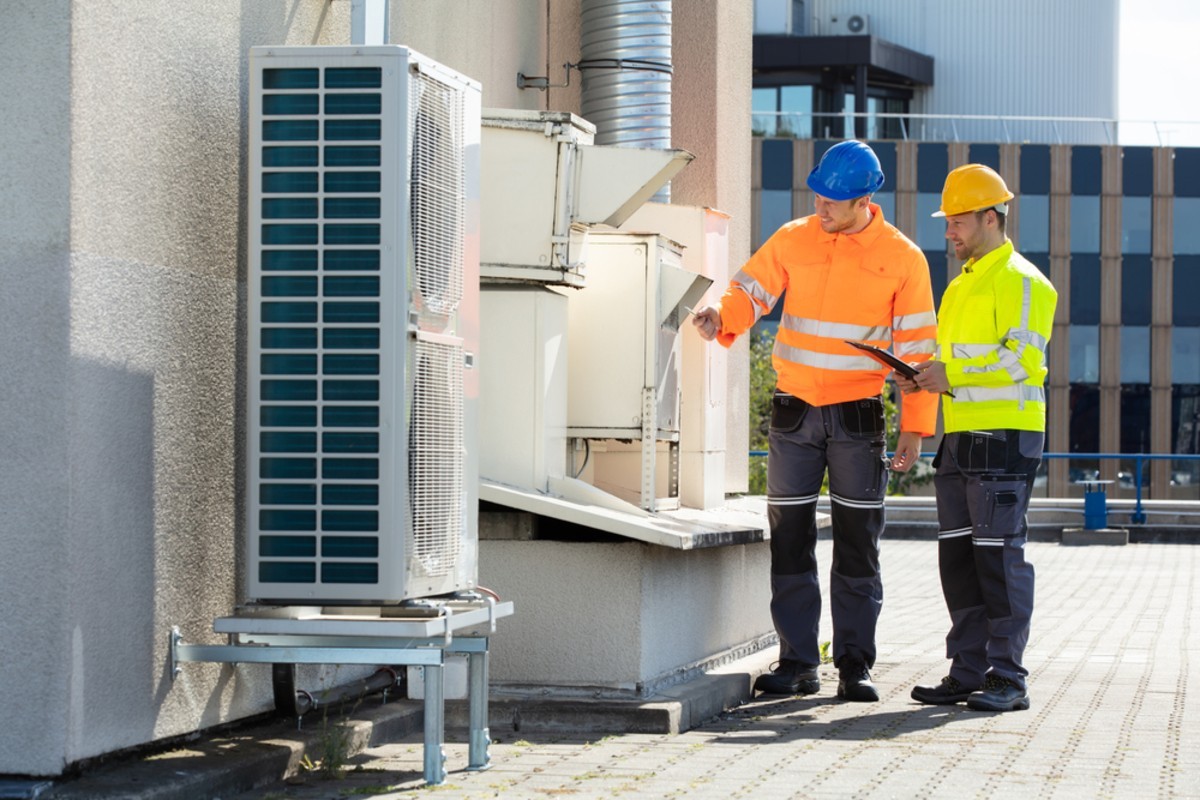HVAC & Energy Efficiency Trends in Commercial Buildings

Commercial builders, managers, and owners have been focusing their efforts, capital, and resources on making sustainability and energy efficiency more than buzzwords in the commercial HVAC industry. HVAC contractors specializing in commercial buildings must keep up with industry trends to guarantee their customers the most energy-efficient systems possible.
As owners and building managers become increasingly concerned about the environmental impact of energy production and the uncertainties surrounding future energy prices, efficiency improvements in HVAC equipment become more appealing. The total efficiency of today's HVAC systems became better thanks to advancements in technology in commercial applications.
Here are some examples of how commercial systems are changing:
Trends in Energy Efficiency
Efficiency in Energy Consumption
A commercial building HVAC system can consume more than half of the structure's total energy consumption. Modern systems have higher efficiency scores and innovative features like multi-stage air volume fan regulation and changeable speed drives, regulating motor speed, and saving energy.
Alternative Sources of Energy
Businesses can save money on power bills while also reducing their environmental effect by using renewable energy sources. Solar power, which harnesses the sun's accessible and clean energy, is at the top of the list. Other energy sources such as geothermal and wind energy are also feasible options, primarily wind energy, since more plans are to construct more wind turbines at sea.
Daylight-Friendly Designs
These are commercial building designs and construction that capture the HVAC system's sunlight through windows, skylights, natural doorways/openings, and reflective surfaces. These systems might include an adaptive control system that helps change the illumination and manage system costs and efficiency.
Most modern building designs take their inspiration from nature in many aspects. The use of biomimicry was trending and viewed as the best way for a sustainable future for the industry. Many structures now consider how much natural light a building needs to regulate heat and cut energy costs. This advancement is aside from the better lighting systems that are under development.
Other HVAC Trends Integrated in Buildings
Commercial building owners are implementing the latest developing trends into their HVAC management system in the following ways:
Energy Recovery Ventilation (ERV)
It is a residential and commercial HVAC energy recovery method that uses the stored energy in usually exhausted air from a building or conditioned area to modify (precondition) incoming external conditioned air. It captures exhausted air and uses it to condition incoming air. This method decreases HVAC requirements while maintaining climate control in the required locations.
Consider installing HVAC access doors and panels, which will add more convenience and efficiency to any maintenance work if you need a regular inspection for your building's HVAC installations. Never settle for standards that don't meet your expectations, so make sure to research the best ones you can find in the market.
Smart Technology
Manually adjusting and managing a heating and cooling system is becoming obsolete. The wave of the future is intelligent systems that you can operate remotely from several devices. These methods provide improved consistency and efficiency, as well as assisting in keeping maintenance programs on track.
For greater comfort and convenience, the manufacture of HVAC controls are already with more accurate sensors. The previous HVAC cooling and heating equipment control systems used manual setup based on the building's working schedule. Today's HVAC control systems have additional sensors to keep track of what's going on. They are more accurate in estimating the activity level in the building.
Speed Controls
It is typical for HVAC systems to have designs that function at maximum heating or cooling capacity. Unfortunately, not all of them are on par with the need and must run at a reduced capacity. As a result, the HVAC manufacturing business developed more sophisticated variable speed controls. The efficiency and productivity of a heating or cooling system that operates in changeable load conditions are higher.
Duct Sealing/Ductless Unit Installation
It's vital to keep the ductwork sealed to avoid air loss and energy waste. In addition, numerous commercial property owners and contractors opt for ductless units to meet specific needs and as an alternative to a more expensive traditional ductwork system.
Variable Refrigerant Flow (VRF) Systems
VRF systems are still more cost-effective than traditional split A/C systems because of their minimal maintenance and energy expenses. They provide a customized degree of control that is desirable to all building occupants. Even when outside the specified points, variable refrigerant flow systems work well in part load.
They react fast to changes in the environment. When the facility is vacant, the temperature drops, but it instantly rises again once people return to work. As the building owner, this is how a VRF works to your benefit.
Final Thoughts
Despite the effects of the pandemic, the changing times still invokes the feeling of optimism for things that are developing. There will be more improvements and integration of technologies to many systems across all industry sectors, enhancing obsolete ones.
If you need to gain additional information, you may contact a licensed professional, especially if you have inquiries concerning a new endeavor. Your project's success will rest upon the knowledge and expertise of these individuals, so ensure to only reach out to someone with an excellent track record.



